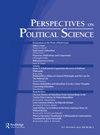Introduction to Symposium on Barry Cooper’s Paleolithic Politics: The Human Community in Early Art
Q4 Social Sciences
引用次数: 0
Abstract
Barry Cooper’s Paleolithic Politics: The Human Community in Early Art applies Eric Voegelin’s concept of “primary experience of the cosmos” to paleolithic art, which expresses a compact form of consciousness that precedes the cosmological civilizations (Mesopotamia, ancient Egypt, and the Achaemenian empire) that Voegelin examined in volume one of Order and History, Israel and Revelation.1 It is the third book that Cooper has written that applies Voegelin’s concepts to materials that Voegelin never wrote about. The other two are New Political Religions, or An Analysis of Modern Terrorism, which uses Voegelin’s concept of pneumopathology to study radical jihadis, and It’s the Regime, Stupid!: A Report From the Cowboy West on Why Stephen Harper Matters, which uses Voegelin’s concept of political myth to examine the low-boil stasis of the Canadian regime.2 Voegelin himself studied Paleolithic art and collaborated with paleontologist Marie König, which Cooper describes at length. However, Voegelin never wrote about that work. Because the focus of this volume precedes the materials covered in volume one of Order and History, Paleolithic Politics has received the nickname, “Volume Zero.” As an analysis of the most compact of available compact symbolisms, this book is counterpart to Cooper’s previous book, Consciousness and Politics: From Analysis to Meditation in the Late Works of Eric Voegelin, which considers Voegelin’s analysis of the most differentiated forms consciousness.3 Thus the earlier book establishes the methodology of the present book, although “methodology” is an inadequate term as shall be explained. The reader can assess the relationship of the two books by reading not only Politics and Consciousness but also the review symposium that was published in the Political Science Reviewer.4 Let this introduction, which considers the internal evidence of the present book, suffice. Paleolithic Politics is an unusual book. A superficial reading may frustrate the reader who expects detailed analysis of cave art, perhaps a treatment analogous to a political philosopher’s detailed exegesis of a Platonic dialogue. But this superficiality is misplaced because one does not analyze Paleolithic cave art to understand the politics of their tribes any more than one reads a Platonic dialogue to learn about the everyday politics of Athens. Cooper claims the “fact” of the paintings—the effort to produce them—reflects a spiritual crisis, perhaps a differentiation of consciousness reflecting a separation of the human from the animal. That “fact” brings us closer to why one would read a Platonic dialogue as well. Even so, the reader may be underwhelmed by the attention paid to the artifacts themselves. Instead of intensive analysis of cave and mobilary art, Cooper seems to take an extremely scholastic approach by standing on the shoulders of some of the giants of paleontology, including Marie König, Alexander Marshack, Jean Clottes, Henri Breuil, and André Leroi-Gourhan. The danger of following the example of William of Conches, though, is that by standing on their shoulders you no longer can see the ground; you spend your time interpreting the interpretations of others. However, this book is not a scholastic exercise. For one thing, Cooper devotes considerable attention not to giants of paleontology but to outsiders, those he seems to think can see things more clearly and more directly than the professionals. While Cooper calls Paleolithic Politics applied Voegelinian political science, it is perhaps helpful to consider it also as an exercise of Polanyian personal knowledge. Cooper describes his book in these terms: “The form of the text in this book is a narrative essay rather than a report, a meditation, a poem, or a treatise” (PP xv). “Narrative” and its related quality, “connoisseurship,” are those pre-scientific virtues that Michael Polanyi says enable scientists to practice science.5 Cooper explains: “narrative does not argue or demonstrate, it persuades. In that sense it is pretheoretical or even prescientific. And yet it also guides and contextualizes argument, knowledge, and science” (PP xvi). Narrative or storytelling unites both Paleolilthic artist and twenty-first century political scientist. One chooses facts to study not based upon a preconceived methodology but because the scientist is one who knows already how to proceed in the activity of science. Cooper elsewhere has explained empirical political science by referring to Aristotle’s comment on the unity of巴里·库珀旧石器时代政治研讨会导论:早期艺术中的人类社会
巴里·库珀的旧石器时代政治:《早期艺术中的人类共同体》将埃里克·沃格林的“宇宙初级经验”概念应用于旧石器时代的艺术,它表达了一种紧凑的意识形式,早于沃格林在《秩序与历史、以色列与启示》第一卷中所研究的宇宙文明(美索不达米亚、古埃及和阿契美尼亚帝国)。这是库伯写的第三本书,将沃格林的概念应用于沃格林从未写过的材料。另外两部分别是《新政治宗教》和《现代恐怖主义分析》,前者用沃格林的肺病理学概念来研究激进的圣战分子,后者是《这是政权,笨蛋!》:《来自西部牛仔的报告:为什么斯蒂芬·哈珀很重要》,这本书用沃格林的政治神话概念来审视加拿大政权的低沸停滞沃格林自己研究旧石器时代的艺术,并与古生物学家玛丽König合作,库珀详细描述了这一点。然而,沃格林从未写过关于这项工作的文章。由于本卷的重点先于《秩序与历史》第一卷所涵盖的内容,《旧石器时代政治》被称为“卷零”。作为对最紧凑的可用紧凑符号的分析,这本书与库珀的前一本书《意识与政治:从埃里克·沃格林晚期作品中的分析到冥想》相对应,后者考虑了沃格林对最分化形式意识的分析因此,早期的书建立了本书的方法论,尽管“方法论”是一个不充分的术语,将被解释。读者不仅可以通过阅读《政治与意识》,还可以通过阅读《政治科学评论》上发表的评论讨论会来评估这两本书的关系。4让这篇介绍考虑到本书的内部证据就足够了。《旧石器时代的政治》是一本不同寻常的书。肤浅的阅读可能会让期望对洞穴艺术进行详细分析的读者感到沮丧,这种分析可能类似于政治哲学家对柏拉图对话的详细注释。但这种肤浅是错误的,因为人们不会通过分析旧石器时代的洞穴艺术来了解他们部落的政治,就像人们不会通过阅读柏拉图式的对话来了解雅典的日常政治一样。库珀声称,这些画的“事实”——制作它们的努力——反映了一种精神危机,也许是一种意识的分化,反映了人与动物的分离。这个“事实”让我们更接近于为什么人们会读柏拉图式的对话。即便如此,读者也可能对人们对文物本身的关注感到失望。库珀没有对洞穴和移动艺术进行深入分析,而是站在一些古生物学巨人的肩膀上,采取了一种极端学术的方法,这些巨人包括玛丽König、亚历山大·马歇尔、让·克洛茨、亨利·布雷伊和安德烈·勒罗伊-古尔汉。然而,以海螺的威廉为榜样的危险在于,站在他们的肩膀上,你就看不到地面了;你花时间去解读别人的解读。然而,这本书不是一个学术练习。一方面,库珀把相当多的注意力放在了外行人身上,而不是古生物学的巨人身上,他似乎认为那些人比专业人士看问题更清楚、更直接。尽管库珀称旧石器时代的政治为沃格林式的政治学应用,但将其视为波兰人个人知识的一种实践或许会有所帮助。库珀是这样描述他的书的:“这本书的文本形式是一篇叙述性的文章,而不是一篇报告、一篇沉思、一首诗或一篇论文”(第xv页)。“叙事”及其相关的品质“鉴赏力”是迈克尔·波兰尼(Michael Polanyi)所说的那些使科学家能够实践科学的前科学美德库珀解释说:“叙事不是争论或论证,而是说服。从这个意义上说,它是理论前的,甚至是科学前的。然而,它也引导并将争论、知识和科学置于语境之中”(第16页)。叙事或讲故事将旧石器时代的艺术家和21世纪的政治科学家结合在一起。人们选择研究的事实不是基于一种先入为主的方法,而是因为科学家已经知道如何进行科学活动。库珀在其他地方通过引用亚里士多德对统一的评论来解释经验政治科学
本文章由计算机程序翻译,如有差异,请以英文原文为准。
求助全文
约1分钟内获得全文
求助全文
来源期刊

Perspectives on Political Science
Social Sciences-Political Science and International Relations
CiteScore
0.20
自引率
0.00%
发文量
24
期刊介绍:
Whether discussing Montaigne"s case for tolerance or Nietzsche"s political critique of modern science, Perspectives on Political Science links contemporary politics and culture to the enduring questions posed by great thinkers from antiquity to the present. Ideas are the lifeblood of the journal, which comprises articles, symposia, and book reviews. Recent articles address the writings of Aristotle, Adam Smith, and Plutarch; the movies No Country for Old Men and 3:10 to Yuma; and the role of humility in modern political thought.
 求助内容:
求助内容: 应助结果提醒方式:
应助结果提醒方式:


